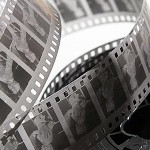 With The Hobbit: An Unexpected Journey about to debut, this thought-provoking piece in the Atlantic about the increasing difficulty of making 35mm film prints of old and archival films seems quite timely.
With The Hobbit: An Unexpected Journey about to debut, this thought-provoking piece in the Atlantic about the increasing difficulty of making 35mm film prints of old and archival films seems quite timely.
This year, Thelma Schoonmaker, Martin Scorsese’s editor for the past 40 years and a three-time Oscar winner, called Grover Crisp, the executive VP of asset management at Sony, for a 35mm print of Scorsese’s 1993 film The Age of Innocence for the director’s private collection.*
“He told me that they can’t print it anymore because Technicolor in Los Angeles no longer prints film,” Schoonmaker recalled. “Which means a film we made 20 years ago can no longer be printed, unless we move it to another lab—one of the few labs still making prints.” (Age of Innocence has since been printed in another lab).
Welcome to the digital world, movie version. With major studios like 20th Century Fox switching to digital prints by year’s end, businesses that used to make and support celluloid—labs, shippers, and suppliers—are shutting down or shifting gears. Fuji is ending its production of film stock, while Kodak, in the throes of bankruptcy, is cutting back on its film products.


